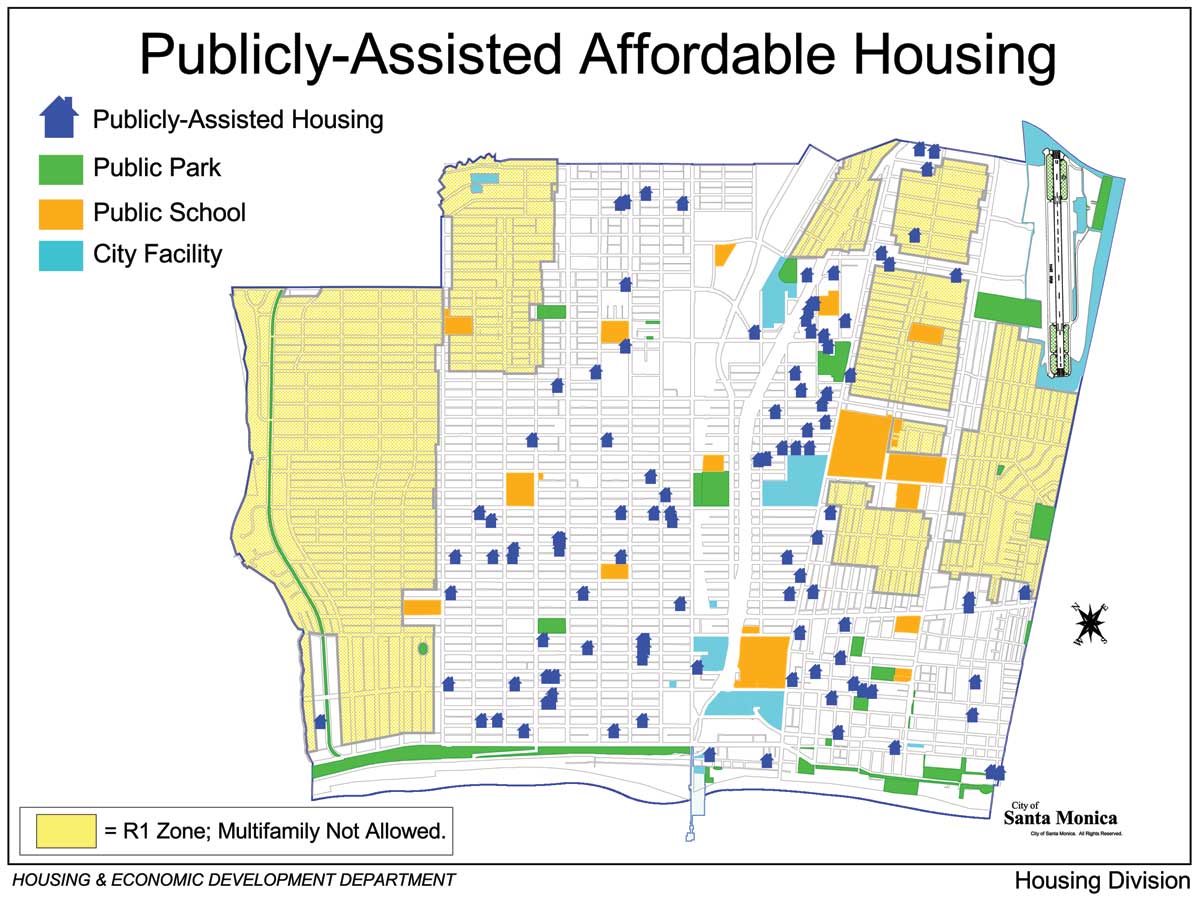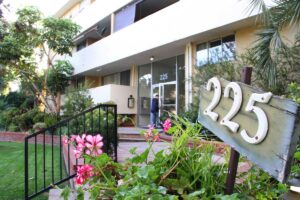CITYWIDE — City Hall recently opted to sell a million dollar single-family home located north of Wilshire Boulevard and set the revenue aside for affordable housing.

This didn't sit well with resident Mathew Millen, who claims that north of Wilshire-residing councilmembers concentrate affordable housing units in the poorest Santa Monica neighborhoods, resulting in adverse impacts. The single-family property, he said, could have yielded seven or eight affordable housing units (city officials said four would have fit).
"The city has a housing policy that perpetuates the city's historically segregated Pico Neighborhood," Millen said in a letter to the City Council last month. "[The sale] is another example of north of Wilshire councilmembers doing everything in their power to avoid developing low-income housing in their own neighborhoods."
A tour, given to the Daily Press by The Community Corporation of Santa Monica, the city's largest affordable housing provider, shined light on how units are placed in the city by the sea. A review of low-income housing placement by the Daily Press showed that while there are pockets of those units, overall housing for the financially strapped is present in all neighborhoods, aside from the northeast portion of the city. (North of Montana Avenue has one multi-family building.)
"Honestly, [it's] price and is it for sale," Sue Keintz, Community Corporation's director of housing development said, explaining how she picks locations. "We're real estate developers, really. I don't want a two-unit building because it's too small for us. No, I can't buy a high-rise with 300 luxury condos because we can't afford it. So the people who understand our sweet spot and bring us buildings, if there's money to borrow, we just run the numbers and do what we can do and make an offer."
The Pico and Ocean Park neighborhoods, the densest in the city, contain the most CCSM units. Next in line are the Mid-City and north of Wilshire neighborhoods, where Keintz said CCSM has become more active recently.
"That was prohibitive for a while but in the late ‘90s through the past decade it became more affordable and (City Hall) got their lending arm figured out," she said.
Keintz is constantly juggling funding sources to make an acquisition work.
"It has a little to do with architecture and construction trade and a lot to do with patience and bureaucracy," she said.
The most she's ever spent on a property was around $5 million, she said. Since 1982, CCSM has developed more than 1,700 units.
New CCSM buildings are constructed to add to the multi-family housing stock, so even if eight units could have been placed on the aforementioned north of Wilshire property, it wouldn't have been in their wheel house.

North of Montana, which is zoned for single-family homes, has the fewest number of affordable housing units. CCSM has one property there. It's on San Vicente Boulevard, a couple blocks from the beach, with 36 units and a pool.
Does affordable housing change a neighborhood?
Mary Marlow, of the Ocean Park Association, said the affordable housing in the neighborhood is generally unnoticeable.
Noting that neighbors only get a say when an incoming building has 50 or more units, which is rare among affordable housing projects, Marlow imagined how neighbors would react to a new low-income building if they had a chance to approve or deny it.
"It's kind of a moot point," she said. "What we're looking for is, does it fit in the neighborhood? We wouldn't scrutinize them any differently than any other neighborhood development."
A majority of CCSM properties are acquired and rehabilitated and therefore the average person can't recognize it as affordable housing from the outside looking in.
"I've driven critics around Santa Monica and said, ‘OK, when you see a CCSM building, just let me know.' Even if I tell them there's a CCSM building on this block they can't pick it out," said Board Chairperson Patricia Hoffman. "(You can) pick out the CCSM buildings, especially in the older neighborhoods, because they're the best kept building on the block."
UCLA professor of urban planning, Michael Lens, said that in general there's little data to suggest that affordable housing actually causes crime in the neighborhood where it is located.
"In most circumstances, small numbers of affordable housing have never really been shown to increase crime in neighborhoods," he said. "There's some pretty recent research that shows that over a certain threshold, when affordable housing takes up a larger chunk of the stock in the neighborhood, that can help a crime increase."
Lens said that in those cases, it's unclear if the housing is the cause of the crime or whether it's because affordable housing tends to end up in higher-crime neighborhoods.
"Why we think that there's a crime and affordable housing connection has much more to do with the fact that the only places that we put affordable housing most of the time are places that already have high crime rates," he said. "But that correlation exists."
In affluent cities like Santa Monica, Lens said, there's not large sample size when it comes to measuring the impacts of affordable housing.
"There's just not a lot of circumstances in which we have built a meaningful number of affordable units in places like 2013 Santa Monica," he said.
It's unclear how affordable housing affects Santa Monica's crime rates. Santa Monica police did not respond to requests for comment by press time. After reviewing recent crimes on the Santa Monica Police Department's online mapping database, crime does not appear to occur at a high rate near affordable units. Public safety officials have long said that crime occurs with the highest frequency in Downtown, where most of the people, or targets, are.
Affordable housing does not impact surrounding real estate values, according to both Lens and the National Association of Realtors citing several scholarly articles.
dave@www.smdp.com









